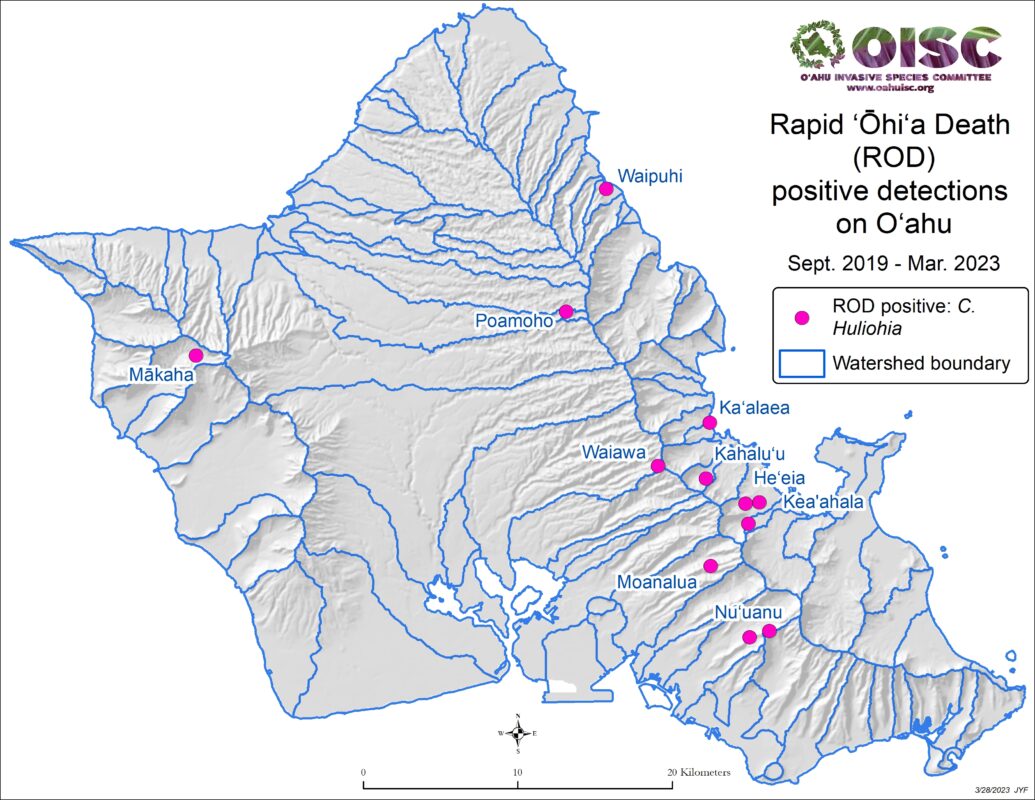Keep up-to-date about ROD on Oahu and learn what you can do to stop ROD from spreading.
#ohialove
FOURTH DETECTION OF RAPID ʻŌHIʻA DEATH ON O‘AHU
Less Aggressive Fungus Found in State Forest Reserve
Aggresive ROD Fungus Confirmed on Kaua‘i
JOINT NEWS RELEASE FOR IMMEDIATE RELEASE December 21, 2018 DEPARTMENT OF LAND AND NATURAL RESOURCES DAVID Y. IGE: GOVERNOR SUZANNE…
Read More
Public Hearings for Rapid ʻŌhiʻa Death Quarantine Rule
If the permanent rule cannot be established before the temporary rule expires, ʻŌhiʻa logs, plant parts and soil will be able to freely move inter-island with NO inspection for the disease.
SHOW YOUR ‘ŌHI‘A LOVE!
Provide testimony to support a permanent quarantine rule to restrict the movement of ‘ōhi‘a off Hawai’i Island.





